From victim to advocate: Lessons from a sex trafficking survivor
By Charlene Muhammad -National Correspondent- | Last updated: Jun 25, 2014 - 11:30:56 AMWhat's your opinion on this article?
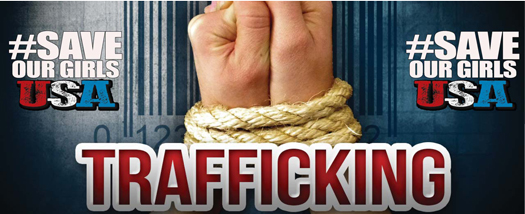
|
LOS ANGELES—Asia Graves was once trapped in a life of sex trafficking, but today she works one girl at a time to help others escape and rebuild their precious, fragile lives.
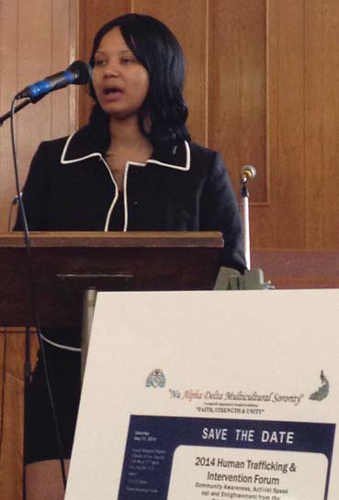
Asia Graves, 26-year-old sex trafficking survivor advocate, tells her story at the Nu-Alpha Delta Multicultural Sorority’s recent “2014 Human Trafficking Intervention Forum” at Good Shepherd Missionary Baptist Church of Los Angeles.
|
Her first sexual experience was at age six at the hands of her mother’s then-drug-dealing boyfriend. The abuse continued until she was 10-years-old, Ms. Graves said.
Her father, an alcoholic with 19 boys and two girls, didn’t have time to focus on what was going on with her, according to Ms. Graves, who is based in Compton, Calif.
Her mom would get clean, relapse and during those times, the abuse would resume, she said. “That same drug dealer kept coming back and my mom knew that this man was touching me. She allowed him to touch me so that she could get her drugs, and that made me feel as if I was only worth sex,” Ms. Graves said.
Today, her mother is sober and the most supportive person in her life. “She encourages me to be a woman of dignity and of the lord. I call her my best friend,” she said. The 26-year-old recently recounted her journey during a forum on human trafficking and intervention hosted by Nu-Alpha Delta Multicultural Sorority at Good Shepherd Missionary Baptist Church of Los Angeles. Ms. Graves tries to impart what she’s learned to young girls she encounters on streets and in safe havens.
Tragic stories of sexually exploited girls
Ms. Graves shared the story of a madam, a female pimp, sentenced to eight years in federal prison for trafficking her 13- and 15-year-old sisters. The madam was just 18-years-old, said Ms. Graves.
“For people who think it doesn’t happen in their community, trust me, it does,” she told The Final Call.
Ms. Graves and other advocates say it’s not as easy to stop sex trafficking as people think. Pimps are tech savvy, they said. Pimps are moving girls online and advocates don’t have the resources to match what pimps are doing. “We can’t tell by looking at a picture. I’m sure you see these girls walking down the street. You can’t tell how old they are. The girl may look about 21, 22 but only be about 16-years-old,” she said.
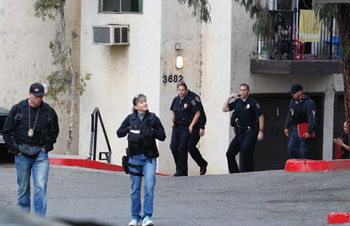
Local law enforcement and FBI agents look for a suspect during a raid in Mid-City area, Jan. 8, in San Diego. Seventeen people were arrested in California, Arizona and New Jersey under an indictment that accuses a San Diego-based street gang of running a vast prostitution ring. The gang based in San Diego’s increasingly gentrified North Park neighborhood operated a prostitution ring spanning 46 cities in 23 states, recruiting women and girls by promising luxurious lifestyles, prosecutors said. Gang members allegedly branded the women with tattoos and bar codes and traded them among themselves. Photo: A/P World Wide photos
|
Ms. Graves, who is usually good at spotting minors, once found a girl online she thought was about 19, though the girl looked younger. It turned out the girl was only 12-years-old, she said.
“My youngest client was only eight-years-old. She was still playing with Barbie dolls and wearing Hello Kitty! I got her a Hello Kitty book bag. Her mom basically let her boyfriend sell her so she could have money,” Ms. Graves told The Final Call.
According to Ms. Graves, most people think the major link to sex trafficking is poverty, but it’s sexual abuse.
“I don’t know any other job industry other than the sex trade where 80-90 percent of the people who worked in that field have been sexually abused. If you think about the average age of a girl entering prostitution is 12-14 years old, then you’ve got to think that they’ve been abused before that,” she said.
As for the eight-year-old Hello Kitty fan, she’s 11 now, back in school, doing well, Ms. Graves said. The girl’s mother moved the child to another city and she’s in therapy, which advocates said is crucial to recovery.
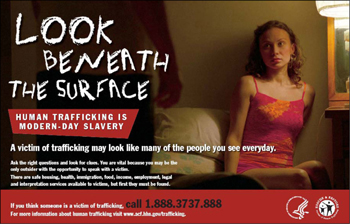
|
Sharee Sanders Gordon, deputy city attorney and Neighborhood School safety attorney, argued sex trafficking is becoming a big issue and gaining publicity because it’s spreading into other communities. But young, Black girls have been sold in the midst of silence for decades, she said.
The biggest victims of prostitution are teen runaways and young ladies and young men in the foster care system, said the prosecutor. Thirteen is the average age of a newly recruited girl who is sex trafficked, she said, citing a University of Pennsylvania study.
In the U.S., 300,000 children are at risk of becoming forced sex workers, added Ms. Sanders Gordon.
Although the majority of teens forced into prostitution are runaways from poor and inner city neighborhoods, the percentage of girls from upper and middle class homes is going up, she continued. “And that’s why this has become such a big topic now, because it’s not just in the poor communities.”
What’s even more alarming is pimps are recruiting children with learning disabilities, according to Lt. Andre Dawson, officer-in-charge of the Los Angeles Police Department’s Human Trafficking Division, which works to get pimps off the streets.
Sex trafficking: Black females main targets
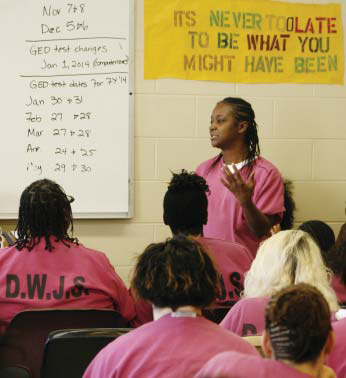
Sheila Johnson, 33, addresses other inmates during a meeting of Prostitution Anonymous at the Cook County Jail in Chicago, Aug. 16, 2013. Ms. Johnson told her peers how she had a difficult time breaking free from a boyfriend who was also her pimp. She was addicted to drugs - and, she admitted, “the money.” “As a regular person, I wouldn’t dare do the things that I did because I was on drugs,” she said after the meeting, as tears streamed down her face. “Being sober, I wouldn’t DARE prostitute.” Photo: A/P World Wide Photos
|
Some service providers have reported that the percentage of Black girls they help is higher than the percentage of racial minorities in their city populations, according to Dr. Hughes’ study. In addition, while pimps are less than one percent of all prostitution-related arrests, women and girls who should be seen as victims make up 70 percent to 90 percent of arrests for sex sales.
According to the FBI, Dr. Hughes’ study continued, Black children were 55 percent of all under-18 prostitution-related arrests in the U.S., more than any other racial group, and most of those arrested were Black girls.
Foster care: A gateway into sex trafficking?
Ryan Thompson of Charles R. Drew University of Medicine and Science said understanding the link between sex trafficking and foster care is crucial for seeking solutions, though he doubts the problem will ever be eradicated.
He understands the need and urgency to focus on gang member involved in sex trafficking, pimps and getting girls off the streets across the country, but crisis must be viewed from a larger lens, said Mr. Thompson, who holds a masters degree in public health.
“A lot of times we talk about the trafficking of our young sisters into prostitution, but a lot of times, well all of the time in the meetings I’ve been a part of, we don’t look at gateways into prostitution,” he said.
Mr. Thompson has been looking into the problem through his work with the California Partners for Permanency, a federally funded project to reduce the number of children in long-term foster care. It’s one of six across the country funded through a $100 million presidential initiative.
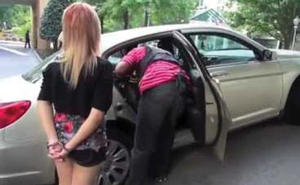
Arrests made in Operation Cross Country to combat child prostitution Photo: MgnOnline
|
“What we found out when we were talking to these sisters who were participating in prostitution is that they were former foster care kids,” Mr. Thompson said. When he’d further question young women on the link between prostitution and foster care, he was saddened but not surprised by the answers that came back.
“The sisters would say, ‘Listen. I’m a former foster care kid, but I prefer to be out here on the streets with this person (pimps or managers), then to be inside the foster care system where a lot of trauma would occur, from sexual assaults to physical, mental assaults.’ So they were literally forced out into the streets and obviously prostitution or pimping is one of those vulnerabilities that presents itself,” Mr. Thompson told The Final Call.
The girls are looking for someone to confide in and the pimps appear with food, clothing and shelter, and at once, there’s a gateway into prostitution, where the girls have chosen the lesser of two evils, he said.
“What we like to focus on is, okay, we understand pimping is bad, and we understand there’s an immediate need, kind of like healthcare. You deal with the acute symptoms, but you also want to find the etiology of it, the beginning of it and make sure that this doesn’t continue and this is not a chronic disease,” he said.
“California has some of the best children’s laws on the books in this nation, but they don’t follow them because obviously this is a multi-billion dollar system. There’s a lot of money being made off the backs of our children … and making money off the backs of descendants of enslaved Africans continues to this day.”
Good legislation just a start
California voters adopted Proposition 35 in 2012, which imposed stiffer criminal penalties on sex traffickers. The law requires convicted sex traffickers to register as sex offenders, and it imposes fines from convicted human traffickers to pay for services to help victims. The legislation also mandates law enforcement training on human trafficking and requires sex offenders to disclose their internet accounts.
In Georgia, the Human Trafficking Notice Law, which passed in 2013, requires certain businesses and establishments to post notices to enable victims of human trafficking to obtain help and services. Failure to post a notice could mean a fine up to $5,000.
In New York, the Safe Harbor Law was created to protect sexually exploited children from being charged with juvenile delinquent offenses, in appropriate cases. The law defines children who are involved in these crimes as victims, not perpetrators.
There must also be places to seek refuge for girls and women trapped in the sex industry. Resources across the country must include overnight shelters or drop in centers, according to Ms. Graves. Many girls try to exit the life but only find protection in centers that remain open during traditional business hours, she said. When day breaks, they have to leave, and the pimping starts all over again.
“They have to get out and the pimps know that, so when they have to leave the shelter, the pimps are waiting outside in all their fancy cars,” said Ms. Graves. “These drop-in centers play a crucial role in making sure the girls have a safe environment to hang out in during the daytime, get job training programs, work with survivors like myself, and have strong, African American women role models, which they need because a lot of our girls are girls of color,” she continued.
During her efforts to help girls as a consultant for the Department of Justice and in cities including Boston, Washington, D.C., and New York, only about 10 percent of girls she encountered were not Black, Ms. Graves said.
“A lot of girls, they get into this because their families aren’t there for them, so we need to make sure that in our communities, the fathers are actually around their kids and if that father’s lacking, the mother needs to step up to the plate, because she’s the one who did the deed with that man, and take responsibility for the fact that she’s made a child,” Ms. Graves asserted.
“It’s our own trafficking our own children. Pimps don’t care who they traffic. They’d traffic their mama if they were going to make a profit on it,” said Ms. Graves.
(Share this important story using the hashtag #SaveOurGirlsUSA and join the dialogue.)
INSIDE STORIES AND REVIEWS
-
-
About Harriett ... and the Negro Hollywood Road Show
By Rabiah Muhammad, Guest Columnist » Full Story -
Skepticism greets Jay-Z, NFL talk of inspiring change
By Bryan 18X Crawford and Richard B. Muhammad The Final Call Newspaper @TheFinalCall » Full Story -
The painful problem of Black girls and suicide
By Charlene Muhammad -National Correspondent- » Full Story -
Exploitation of Innocence - Report: Perceptions, policies hurting Black girls
By Charlene Muhammad -National Correspondent- » Full Story -
Big Ballin: Big ideas fuel a father’s Big Baller Brand and brash business sense
By Bryan Crawford -Contributing Writer- » Full Story






 Click Here Stay Connected!
Click Here Stay Connected!








